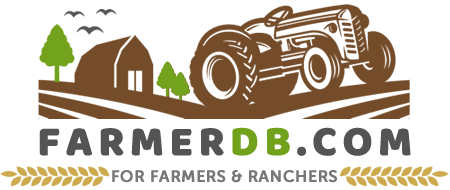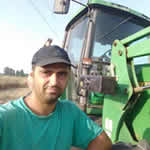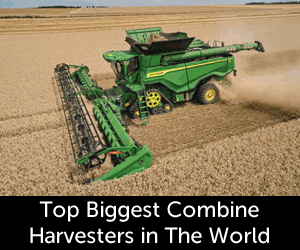Contents
Types of Grasses
1. Cool-Season
Cool-season grasses, also known as C3 plants, grow best in temperate climates [65°F and 75°F (18°C to 24°C)] and reach peak growth during the cooler temperatures of spring and fall.
They begin growing early in the season and may enter a semi-dormant state during hot and dry summer periods.
These grasses use the C3 photosynthetic pathway (Calvin cycle) to fix carbon dioxide, which makes them less efficient in high temperatures due to increased photorespiration (CO₂ loss).
Examples:
- Timothy Grass
- Ryegrass
- Tall Fescue
- Orchardgrass
- Kentucky Bluegrass
2. Warm-Season
Warm-season grasses, also known as C4 plants, are adapted to hotter climates [90°F and 95°F (32°C to 35°C)] and reach their peak growth during late spring and summer.
They are more drought-tolerant than cool-season varieties and efficiently utilize water and nitrogen, making them ideal for regions with high temperatures and variable rainfall.
These grasses use the C4 photosynthetic pathway (Hatch-Slack cycle), which helps concentrate CO₂ more effectively, reducing photorespiration losses and increasing growth efficiency in warm conditions.
Examples:
- Bermudagrass
- Bahiagrass
- Switchgrass
- Sudangrass
- Crabgrass
Nutritional Differences
- C3 Grasses (Cool-Season)
- Higher crude protein content and better digestibility.
- Slower growth in hot weather, but remains palatable for livestock.
- More susceptible to heat stress and dormancy in summer.
- C4 Grasses (Warm-Season)
- More fiber (Neutral Detergent Fiber – NDF), making them less digestible than C3 grasses.
- More resilient in drought-prone areas due to efficient water use.
- Higher productivity in hot summer months but can become coarse and less palatable if overmature.
Why It Matters for Farmers
- In cooler climates: C3 grasses provide better nutritional quality and digestibility for livestock.
- In hotter climates: C4 grasses are preferred due to higher resilience, drought resistance, and better summer growth.
- Balanced grazing systems: Farmers often mix C3 and C4 grasses to maintain year-round forage availability.
Growth and Grazing Management
To maximize forage utilization and maintain pasture productivity, farmers must implement proper grazing and harvesting strategies.
Effective management ensures that grasses remain nutritious, recover quickly, and provide a sustainable feed source for livestock throughout the year.
Below are key aspects of growth and grazing management that every farmer should consider:
1. Rotational Grazing
Rotational grazing involves dividing pastures into sections (paddocks) and periodically moving livestock to allow grasses to regrow before being grazed again.
This practice prevents overgrazing, which weakens root systems and reduces future forage production.
By providing adequate rest periods, it promotes faster regrowth and improves forage quality, ensuring livestock consume younger, more nutrient-dense grasses.
Additionally, it reduces soil compaction, enhancing water infiltration and root development.
Best Practices for Rotational Grazing:
- Divide pastures into smaller paddocks and move livestock every few days or weeks based on grass recovery.
- Monitor grass height before and after grazing (ideal grazing height varies by species but is typically 4-8 inches).
- Use temporary fencing to create flexible grazing zones.
- Ensure water availability in each paddock to prevent livestock from overgrazing one area.
2. Stocking Density Management
Stocking density refers to the number of animals per acre of pasture.
Too many animals in one area can lead to trampling, overgrazing, and pasture degradation, while too few can result in overmature forage with reduced nutritional value.
Proper stocking density prevents trampling damage, ensures adequate forage for each animal, minimizes competition, and maximizes pasture efficiency by balancing grass growth with livestock intake.
In this community, you can find the recommended stocking density for each cattle, sheep, pig, and goat breed, along with others, detailing how many you can raise per acre. Just use the search function.
Best Practices for Stocking Density:
- Match livestock numbers with pasture carrying capacity (e.g., 1-2 cows per acre, depending on forage availability).
- Adjust stocking rates seasonally, as grass production fluctuates with weather conditions.
- Avoid continuous grazing, which allows livestock to overgraze preferred areas and ignore less palatable plants.
3. Harvest Timing
For farmers harvesting grass for hay or silage, timing is crucial for nutrient retention and digestibility.
Cutting too late results in fibrous, less palatable forage, while cutting too early may yield insufficient biomass.
Harvesting at the right stage preserves protein levels, improves digestibility by reducing lignin content, and promotes regrowth by encouraging leaf production over seed formation.
Best Practices for Harvest Timing:
- Cool-season grasses should be cut at the boot stage (before seed heads fully emerge).
- Warm-season grasses should be harvested when they reach 18-24 inches in height.
- Hay fields should be cut before flowering to retain higher energy and protein levels.
- Monitor weather conditions to avoid harvesting during rainy periods, which can cause nutrient losses.
4. Soil Fertility Maintenance
Healthy soil supports healthy forage.
Regular fertilization, pH adjustments, and reseeding promote strong grass growth and consistent forage availability.
Providing essential nutrients like nitrogen, phosphorus, and potassium increases forage yield, while preventing soil acidification improves root development and nutrient uptake.
Proper soil management also extends pasture longevity, reducing the need for frequent reseeding.
Best Practices for Soil Fertility Maintenance:
- Conduct soil tests every 2-3 years to determine nutrient needs.
- Apply fertilizers or manure based on test recommendations
- Maintain soil pH between 6.0-7.0, as extreme acidity or alkalinity can affect grass productivity.
- Overseed pastures with new grass varieties or legumes to fill in gaps and improve biodiversity.
Seasonal Growth Considerations
Understanding how grasses grow throughout the year helps farmers plan feeding and grazing systems effectively:
- Spring and Early Summer: Rapid growth period which is ideal for grazing and hay cutting.
- Mid-Summer: Warm-season grasses thrive, while cool-season grasses may slow down due to heat stress.
- Fall: Cool-season grasses regrow, offering extended grazing opportunities.
- Winter: Grasses become dormant, requiring stockpiled forage, hay, or silage for feeding.
Farmers should plan for seasonal forage shortages by storing hay, planting alternative forage crops, or implementing deferred grazing strategies.
Benefits
- Reduces dependency on commercial feeds.
- Prevents erosion, enhances organic matter, and supports biodiversity.
- High-fiber content promotes rumen health and efficient digestion.
- Suitable for various soil and environmental conditions.
- Properly managed grasslands support consistent livestock performance.
Challanges
- Weakens pasture productivity and leads to soil degradation.
- Requires supplemental feeding in winter or drought conditions.
- Unmanaged pastures may become infested with low-nutrient weeds.
- Overmature grasses lose digestibility and protein content.
Do you have any experience with the topic discussed here?
Would you like to improve the information shared and contribute your practical knowledge on the subject?
Your real-world experience as a farmer or rancher could greatly benefit other members, and the community would deeply appreciate your contribution.


